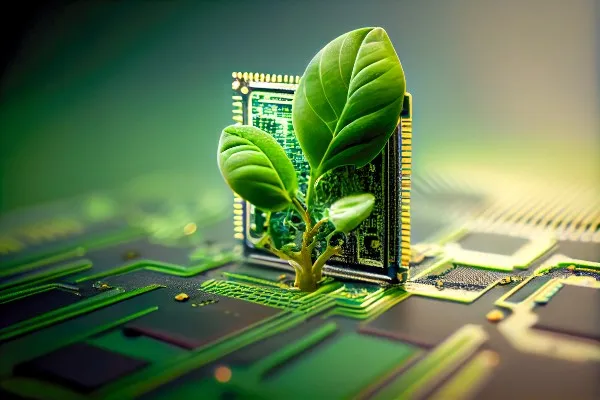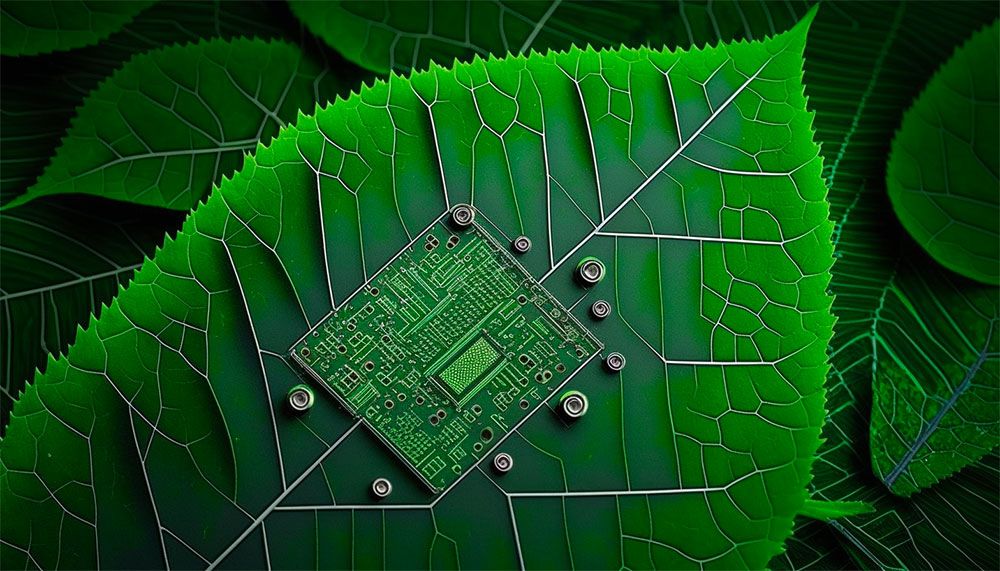
In an era marked by rapid technological advancements, the concept of green electronics emerges as a beacon of hope for a sustainable future. As electronic devices become an inseparable part of our lives, the environmental impact of their production, usage, and disposal cannot be ignored. In this blog, we will delve into the world of green electronics, exploring how innovation and responsibility are reshaping the electronics industry to create a more environmentally conscious and sustainable ecosystem.
- Understanding Green Electronics: A Step Towards Sustainability

Green electronics, also known as eco-friendly electronics or sustainable electronics, refers to devices that are designed and manufactured with environmental considerations in mind. These devices aim to minimize their carbon footprint, energy consumption, and hazardous materials, while also promoting eco-conscious practices throughout their lifecycle.
- Eco-Design: Fostering Environmental Responsibility
The journey towards sustainability begins with eco-design. Manufacturers are now prioritizing the use of recyclable materials, reducing energy consumption during the production process, and embracing modular designs that facilitate repair and upgrades rather than complete replacements.
- Energy Efficiency: Reducing Consumption, Amplifying Impact
Energy efficiency is a cornerstone of green electronics. By optimizing power consumption, devices can operate more efficiently, leading to reduced greenhouse gas emissions and lower electricity bills for consumers.
- E-Waste Management: From Recycling to Circular Economy
Green electronics emphasize responsible e-waste management. Companies are implementing recycling programs to extract valuable materials from discarded electronics, thereby reducing landfill waste and conserving valuable resources. Additionally, the concept of a circular economy encourages the repair, refurbishment, and reuse of electronics to extend their lifecycle.
- Renewable Energy and Electronics: A Perfect Match
The integration of renewable energy sources with electronics is a match made in sustainability heaven. Devices are being designed to harness solar power, kinetic energy, and other renewable sources, promoting self-sufficiency and reducing dependence on fossil fuels.
- Green Packaging: Eco-Friendly Presentation
Sustainable electronics extend beyond the devices themselves to encompass their packaging. Manufacturers are opting for recyclable, biodegradable, and minimalist packaging to reduce waste and minimize their environmental impact.
- Regulatory Standards: Driving Change from Within
Green electronics are bolstered by regulatory initiatives and industry standards. Governments and organizations around the world are implementing eco-labeling and energy efficiency standards, encouraging manufacturers to meet environmentally responsible benchmarks.
- The Consumer Role: Empowering Sustainable Choices
Consumers play a vital role in shaping the future of green electronics. By opting for eco-friendly devices, supporting recycling programs, and demanding greater transparency from manufacturers, consumers can drive positive change within the industry.
- The Business Case for Sustainability: Cost-Effectiveness and Reputation
Beyond the moral imperative, businesses are recognizing the financial benefits of green electronics. Sustainable practices not only reduce operational costs but also enhance a company’s reputation, appealing to environmentally conscious consumers.
Green electronics herald a promising era of sustainability, where innovation and responsibility converge to protect our planet and preserve resources for future generations. As we continue to witness technological marvels, let us do so with an unwavering commitment to eco-consciousness. Through collective efforts from manufacturers, consumers, and policymakers, we can embrace green electronics, making sustainability a core tenet of the electronics industry. Together, we can pave the path towards a brighter, greener, and more sustainable future.







